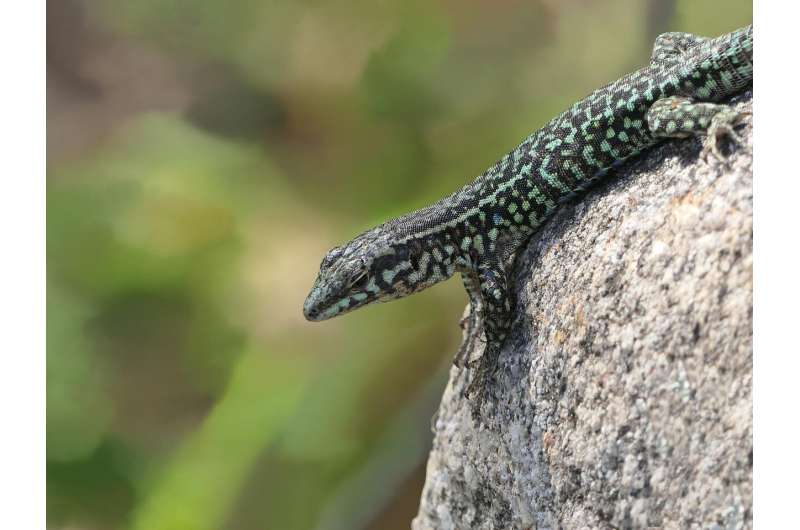Rock lizards help transfer mite‐transmitted infections

April in Siberia is a month when mites awaken and find their first victims. Traditional reservoirs of mite‐transmitted infections are rodents and wild animals: rabbits, foxes, squirrels, and others. A Russian Science Foundation-supported research team has discovered that a major role in the transmission cycle of mite‐transmitted infections is played by rock lizards, which can be found in the south of Russia, Georgia, Abkhazia, and Turkey, and in other countries with a warm climate. The study is published in Journal of Vector Ecology.
The researchers analyzed 872 articles on rock lizards and 352 samples of reptiles in the Zoological Institute of the Russian Academy of Sciences that were collected in Russia (Krasnodar and Stavropol Territories and Kabardino-Balkaria), Georgia, Abkhazia, Azerbaijan, and Turkey. The scientists found 93 mites of three species in samples.
"The collection is the largest in post-Soviet states and one of the largest in the world. Some of the samples were collected in the 19th and even the 18th century, which gives us the opportunity to get a comprehensive idea of the parasite fauna of the whole groups of reptiles," says Maria Orlova, scientist at the TSU Biological Institute and one of the authors of the article. "Reptile-associated mite fauna is not yet well-studied. However, it is very interesting, especially from the practical point of view: Most of the mites we discovered belong to species that are proved to be transmitting dangerous natural infections such as tularemia, borreliosis, hemorrhagic fevers, babesiosis, and others."
The starting point of the research was the genus Darevskia—legendary rock lizards, famous because some species are capable of parthenogenesis (a type of reproduction in which growth and development of embryos occur without fertilization by sperm). One of the most common mite species in samples is a dog mite, Ixodes ricinus. It inhabits the European part of Russia and is a carrier of several strains of encephalitis and a huge number of bacterial infections.
"In the south of Russia (Rostov and North Caucasus), these mites cause outbreaks of human and animal diseases," says Maria Orlova. "However, lizards are not usually viewed as a reservoir of infection, even though they often are. The COVID-19 pandemic has clearly demonstrated what the prize for limited knowledge of the pathogen transmission paths can be. That is why our primary task is to investigate parasitology-wise understudied animals."
To spread the information about mite infections, TSU Information Policy Division together with the specialists of Siberian Medical University and Federal Service for Surveillance on Consumer Rights Protection and Human Wellbeing created a project titled "The Small. The Bad. The Ugly." The project explains how to minimize the risks of being infected by mites.
More information: Maria V. Orlova et al, A review of mites and ticks parasitizing rock lizards (Lacertidae: Darevskia), Journal of Vector Ecology (2022). DOI: 10.52707/1081-1710-47.1.19
Provided by Tomsk State University


















